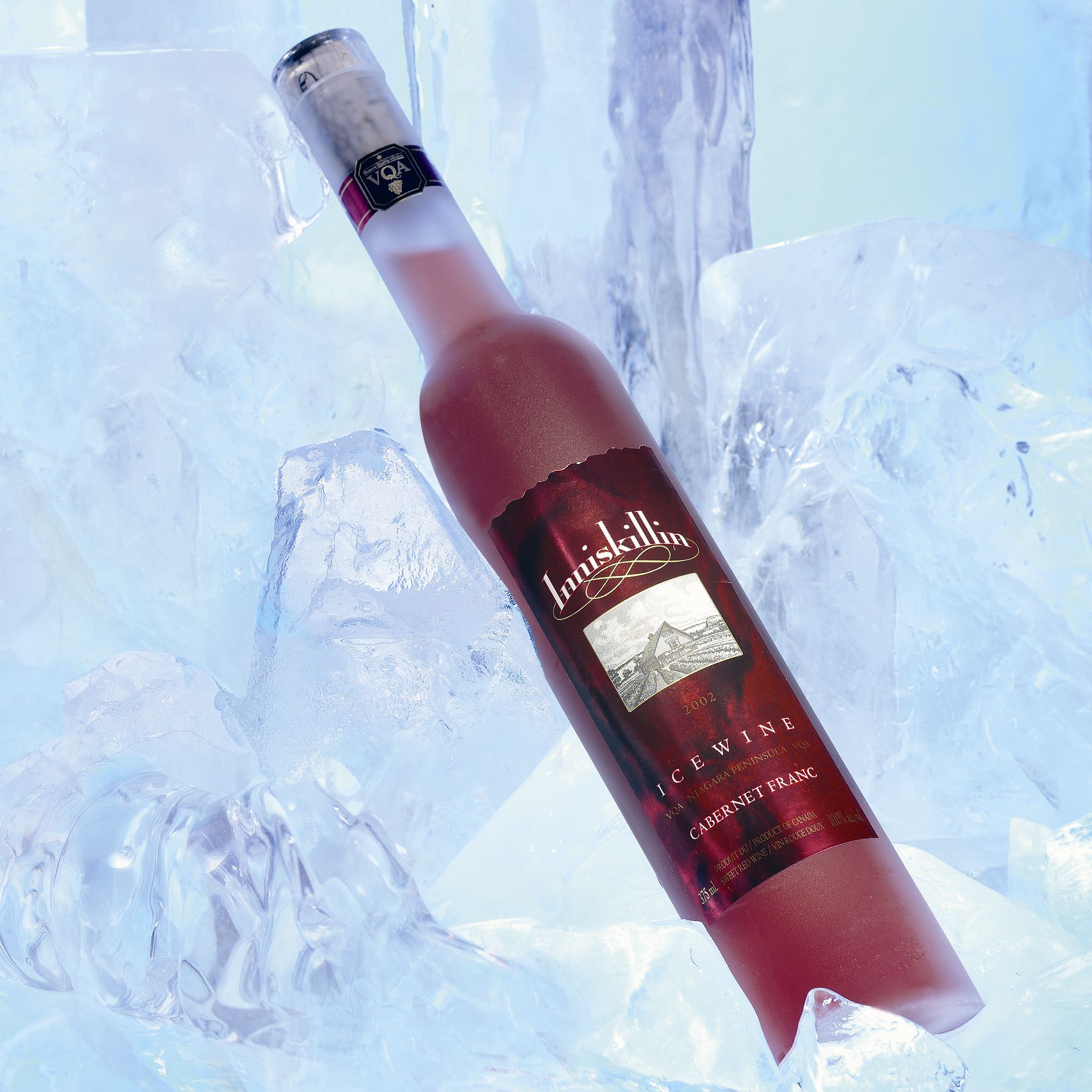Icewine has its origins in German Francony. It was discovered by chance in 1794 when making wine from frozen grapes. It turned out that the wine had a high sacharimetric concentration. Years after, mid 18th century, it began to be produced intentionally in the Rheingau region.
The making process begins in the vineyard. The grape is kept in the grapevine well into winter. The grape being dehydrated produces a high sugar, acid and bouquet concentration. True icewine must be produced naturally, it cannot be artificially frozen. It is collected by hand when temperatures fall below 10-13 ºC below zero.
As water is the first thing that freezes inside the grape, it is technically possible to separate the grape juice if pressed right away before the ice crystals melt. Pressing is complex and it must be carried out in strong cages and with mechanical or hydraulic presses. Pneumatic presses are the least suitable.
The grape-juice obtained at the beginning of the pressing is a natural concentrate, with a rich bouquet, select, highly concentrated (140º Oechsle) and a high acidity (14gr/L). As pressing goes, both parameters decrease with thawing and temperature increase, so only a small proportion (20% of the juice can be used. Final grape-juice must have at least 40º Oechsle.
Cold and sugar concentration make it difficult for fermentation to start immediately, so the juice is tempered, either by controlled heating or leaving it to rest for a couple of days. This allows to eliminate a certain amount of muds. Traditionally, fermentation takes place in wooden casks. As these juices are special, their fermentation is slow and it stops naturally before all sugars are degraded.
Traditionally, the most used varieties in the making of icewine are Riesling and Gewürztraminer, but there are others like Seyval Blanc, Vidal Blanc, Chenin Blanc, Grüner Veltliner, Pinot Blanc, Pinot Gris, Chardonnay, Sémillon, or even red varieties like Gamay, Cabernet Sauvignon, Cabernet Franc and Merlot.





